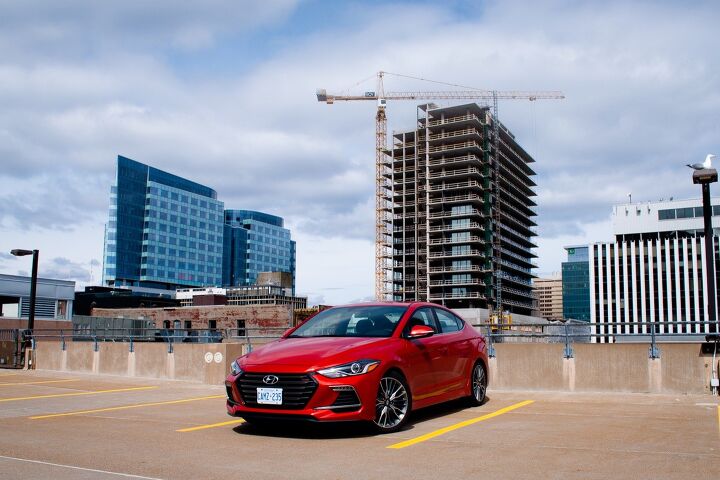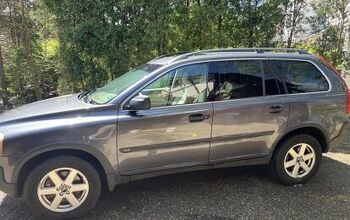2017 Hyundai Elantra Sport Review - Best Version of Hyundai's Best Vehicle
2017 Hyundai Elantra Sport
This is not the 2017 Hyundai Elantra GT3 Superleggera Stradale Competizione with an optional N Performance Package.
The 2017 Hyundai Elantra Sport is not hardcore. It’s not SCCA-certified. It’s not extreme. It’s not uncompromising. And thankfully, it’s not obnoxious, ostentatious, outlandish, or overcooked.
The 2017 Hyundai Elantra Sport is not a Ford Focus RS alternative; it’s not a replacement for your Subaru WRX STI; it won’t satisfy your Renault Sport 230 Renault F1 Team R26.R import cravings.
The $21,650 2017 Hyundai Elantra Sport is, instead, a remarkably balanced junior sports sedan with classy styling and a terrific value quotient, priced $5,100 below the top-spec Elantra Limited.
It’s the best version of Hyundai’s best product.
WHAT DO YOU GET?
It’s enough, particularly with a pleasing six-speed manual shifter and a friendly clutch, to put clear distance between itself and the regular Elantra and its 147-horsepower 2.0-liter.
A seven-speed dual-clutch automatic costs $1,100 extra, and based on our experience with that powertrain combo in the Veloster, we strongly urge you to save $1,100.
Rather than the rear beam axle of other Elantras, the Elantra Sport makes use of multi-link rear suspension, plus a 15mm rear stabilizer bar, rear disc brakes like the Elantra Limited, and bigger wheels than any other Elantras wearing 225/40R18s.
With unique tuning of the suspension and steering plus 54 extra horses, the Elantra Sport is operating in an entirely different sphere from regular Elantras: quicker turn-in, even-keeled cornering, sufficient shove out of corners, and a surprisingly evocative exhaust note that urges you on.
WHAT DON’T YOU GET?
That’s not a chink in the Elantra Sport’s armor. At this low price point — GTI pricing starts $4,800 north of here — the Elantra’s dynamic repertoire is noteworthy.
But livelier steering, which will surely be helped when the Michelin X-Ice tires come off, would dramatically improve the Elantra Sport’s somewhat isolated personality. A modest increase in roll stiffness wouldn’t go amiss. Slightly shorter shifter throws would add to the performance aura. 20 additional lb-ft of torque would allow the Elantra to never feel wanting for extra gumption.
Yet the items from my wishlist missing in the Elantra Sport permit Hyundai to build a balanced car with a low price of entry.
For a car with this much cornering appetite, ride quality is exemplary. Less aggressive steering response enables the Elantra Sport to be a possible alternative for less enthusiastic Elantra consumers who want the extra power without any edginess. Hyundai’s noise/vibration/harshness work resulted in a car that feels far more closely linked to the Sonata than the previous Elantra.
WHAT WOULD YOU RATHER GET?
The comparably priced Ford Fiesta ST is undeniably the better driver’s car, but given the Elantra’s expansive rear seat, the Fiesta ST is a less family friendly vehicle.
Like the Elantra Sport, the 2.5-liter-equipped Mazda 3 is lacking a degree of outright performance. But while the 3 is the more willing partner, the Elantra’s turbocharged powerplant is noticeably more flexible at every point on the rev counter.
WILL ANYBODY KNOW YOU GOT WHAT YOU GOT?
The Sport badge isn’t hiding, but nobody actually thinks “Sport” means anything anymore, do they? The turbo text in the front grille is partially hidden by slats, and again, even turbos don’t automatically suggest performance the way they did in 1987.
Yet the fact that the Elantra Sport provides only faint enhancements to an already attractive car is an intrinsic aspect of its appeal. Far too many pseudo-performance cars shout loudly about levels of sportiness they don’t actually possess.
The 2017 Hyundai Elantra Sport, on the other hand, styles softly and carries a medium-sized stick.
Timothy Cain is the founder of GoodCarBadCar.net, which obsesses over the free and frequent publication of U.S. and Canadian auto sales figures. Follow on Twitter @timcaincars.
More by Timothy Cain
Latest Car Reviews
Read moreLatest Product Reviews
Read moreRecent Comments
- Jeff One less option will be available for an affordable midsize sedan. Not much can be done about GM discontinuing the Malibu. GM, Ford, and Stellantis have been discontinuing cars for the most part to focus on pickups, crossovers, and suvs. Many buyers that don't want trucks or truck like vehicles have moved onto Japanese and South Korean brands. Meanwhile large pickups and suvs continue to pile up on dealer lots with some dealers still adding market adjustments to the stickers. Even Toyota dealers have growing inventories of Tundras and Tacomas.
- Lorenzo This car would have sold better if there was a kit to put fiberglass toast slices on the roof.
- Lorenzo The Malibu is close to what the 1955 Bel Air was, but 6 inches shorter in height, and 3 inches shorter in wheelbase, the former making it much more difficult to get into or out of. Grandma has to sit in front (groan) and she'll still have trouble getting in and out.The '55s had long options lists, but didn't include a 91 cubic inch four with a turbo, or a continuously variable transmission. Metal and decent fabric were replaced by cheap plastic too. The 1955 price was $1765 base, or $20,600 adjusted for inflation, but could be optioned up to $3,000 +/-, or $36,000, so in the same ballpark.The fuel economy, handling, and reliability are improved, but that's about it. Other than the fact that it means one fewer sedan available, there's no reason to be sorry it's being discontinued. Put the 1955 body on it and it'll sell like hotcakes, though.
- Calrson Fan We are already seeing multiple manufacturers steering away from EVs to Hybrids & PHEVs. Suspect the market will follow. Battery tech isn't anywhere close to where it needs to be for EV's to replace ICE's. Neither is the electrical grid or charging infrastructure. PHEV's still have the drawback that if you can't charge at home your not a potential customer. I've heard stories of people with Volts that never charge them but that's a unique kind of stupidity. If you can't or don't want to charge your PHEV then just get a hybrid.
- AZFelix The last time I missed the Malibu was when one swerved into my lane and I had to brake hard to avoid a collision. 1 out of 5⭐️. Do not recommend.







































Comments
Join the conversation
Wouldn't mind seeing this trim level in more of a sports wagon type configuration, something like the size of a 2005-2007 Impreza wagon. Neat car, I didn't know this existed either.
Completely agree. According to https://typeofcars.com/details/hyundai-elantra-2017 , the elantra is best not only in its compact cars class, but also the best Hyundai.